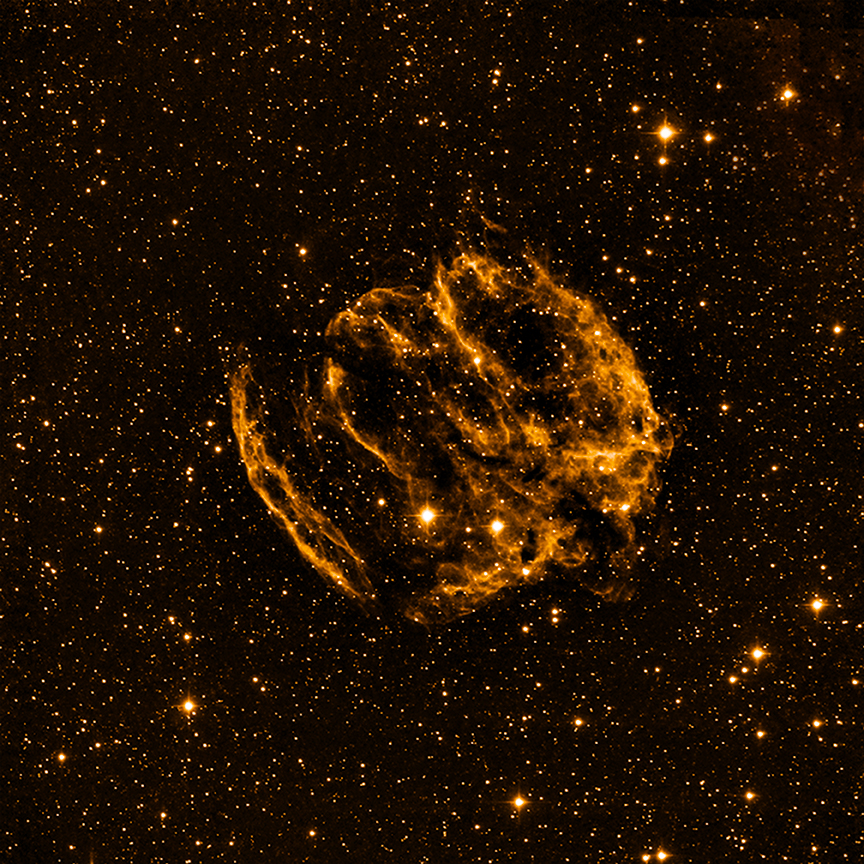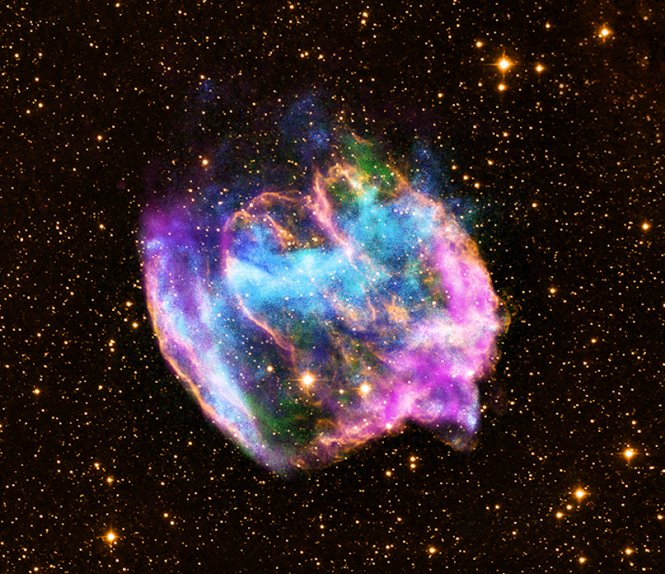Rare Star Explosion Creates Galaxy's Youngest Black Hole

The warped leftovers from a rare star explosion may be hiding the youngest black hole in our galaxy, a new study reveals.
The supernova remnant, called W49B, is about 1,000 years old as seen from Earth, and it is located about 26,000 light-years away. Scientists suspect it met an unusual demise.
"W49B is the first of its kind to be discovered in the galaxy," study lead author Laura Lopez of MIT said in a statement. "It appears its parent star ended its life in a way that most others don't." Lopez and her team unveiled a dazzling video tour of the supernova remnant during a Feb. 13 announcement.
Typically, when a star reaches the end of its life and explodes in a supernova, it shoots stellar material away from its center more or less evenly in all directions, creating a relatively symmetrical cosmic object.
But this didn't happen with the W49B explosion, scientists say. The star's poles ejected debris more rapidly than its equator did, resulting in a supernova remnant with a distinctly asymmetrical shape.

Supernovas tend to leave behind an extremely dense spinning core called a neutron star, which often can be detected through X-ray or radio pulses. But scientists using data from NASA's Chandra X-ray Observatory found no evidence for a neutron star, which makes them believe a black hole might have formed in the supernova instead.
At just 1,000 years old (not including light travel time), this could be the youngest black hole formed in our Milky Way galaxy, scientists say.
Get the Space.com Newsletter
Breaking space news, the latest updates on rocket launches, skywatching events and more!
"It's a bit circumstantial, but we have intriguing evidence the W49B supernova also created a black hole," said co-author Daniel Castro, also of MIT. "If that is the case, we have a rare opportunity to study a supernova responsible for creating a young black hole."
Supernova explosions are not well understood, and extreme cases like W49B that are relatively close to Earth could allow for detailed study, scientists say.
The research was detailed in the Feb. 10 issue of the Astrophysical Journal.
Follow SPACE.com on Twitter @Spacedotcom. We're also on Facebook & Google+.

Join our Space Forums to keep talking space on the latest missions, night sky and more! And if you have a news tip, correction or comment, let us know at: community@space.com.

Space.com is the premier source of space exploration, innovation and astronomy news, chronicling (and celebrating) humanity's ongoing expansion across the final frontier. Originally founded in 1999, Space.com is, and always has been, the passion of writers and editors who are space fans and also trained journalists. Our current news team consists of Editor-in-Chief Tariq Malik; Editor Hanneke Weitering, Senior Space Writer Mike Wall; Senior Writer Meghan Bartels; Senior Writer Chelsea Gohd, Senior Writer Tereza Pultarova and Staff Writer Alexander Cox, focusing on e-commerce. Senior Producer Steve Spaleta oversees our space videos, with Diana Whitcroft as our Social Media Editor.









